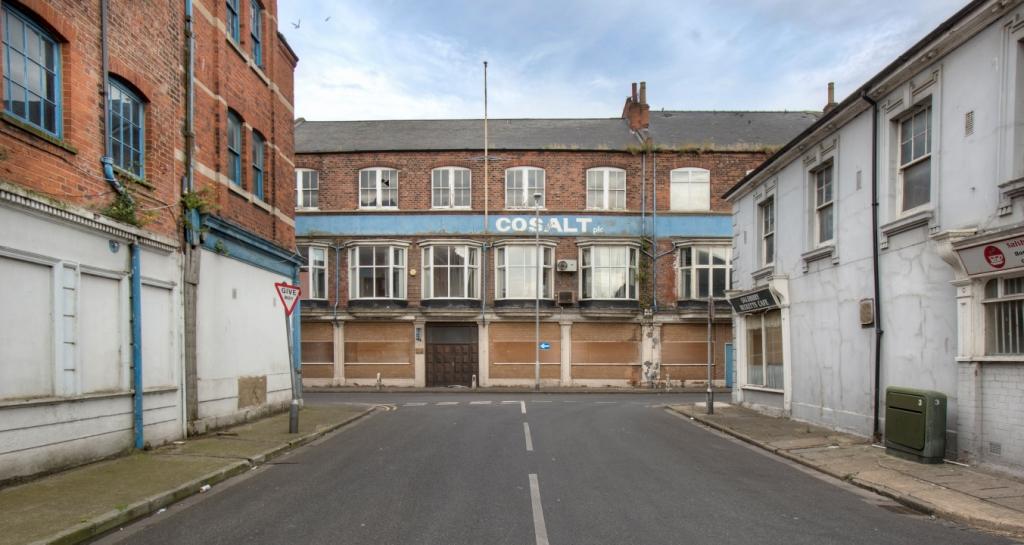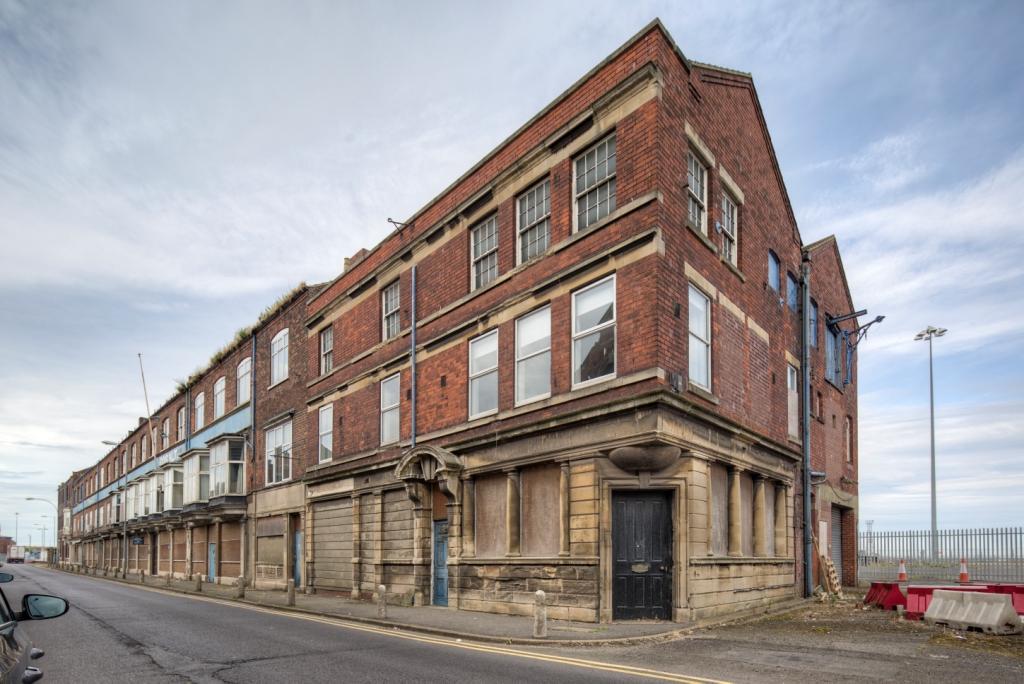Press release: SAVE applies to Court of Appeal in next step to save historic Grimsby dock buildings
20 July 2016
Press release: SAVE applies to Court of Appeal in next step to save historic Grimsby dock buildings
SAVE Britain’s Heritage has applied to the Court of Appeal for permission to appeal the recent decision by North East Lincolnshire Council to demolish several historic buildings at Grimsby docks.
This action follows the recent Judicial Review hearing at the Royal Courts of Justice on 12 July where the Judge halted demolition of the so-called Cosalt Buildings for seven days, but disagreed with our position that the decision-making by the Council had been inadequate in the context of the Environmental Impact Assessment (EIA) screening direction.
After careful consideration, and in light of our very serious concerns about this case, we have decided to apply to the Court of Appeal to challenge the Judicial Review decision and to ensure the Council’s reasons for granting approval for demolition are fully examined in the public courts.
Please help us cover our legal fees for this work. Our target is £8,000 and so far we have already raised £1,600. Visit our fundraising page – here
Henrietta Billings, Director of SAVE Britain’s Heritage said: “SAVE welcomes opportunities for new development and industries at the port, and has a long track record of working successfully with developers and architects to accommodate new uses and the revitalisation of buildings as well as new development. Grimsby was once the largest fishing port in the world, and its surviving Victorian and early 20th century buildings tell that story of national success.
“However in this case we have seen no justification for the demolition of the Cosalt Buildings, and with no strategic masterplan in place to safeguard the listed buildings and surroundings alongside new development, our concern, and that of many others, is that Grimsby’s 19th and 20th century fishing heritage is at serious and irreversible risk.
“After careful consideration, and in light of the weight of objections from national and international heritage organisations, we have decided that the Council’s decision to allow demolition must be fully scrutinised and tested at the Court of Appeal.”
Marcus Binney Executive President of SAVE said: “The famous Royal Naval Dockyards at Chatham, Portsmouth and Plymouth have been revived by heritage projects. Now it is the turn of Britain's commercial docks. Gloucester and Liverpool have led the way - a bold conservation initiative in Grimsby will bring new life to the town. The great needs to be put back into Grimsby. The Cosalt buildings in the Kasbah date from Grimsby’s national prominence in Britain’s fishing industry and are a huge potential asset for the town - they can be saved and re-used."
In May 2016 North East Lincolnshire Council granted consent to Associated British Ports (ABP) who own the port and surrounding buildings, for the demolition of six large connecting Victorian buildings in the Grimsby docks – known as the Cosalt Buildings - to be replaced with a storage area for wind turbines.
Under the decision making process, no formal planning permission was required, and no major environmental impacts were assessed. The buildings form one side of Fish Dock Road – the principal street in the historic area of the docks called The Kasbah. Two listed buildings face the buildings to be demolished, and there are several other listed buildings in the vicinity, all of which contribute to the port’s unique architectural heritage.
The Council had assessed that the demolition would not be likely to have a significant effect on the environment so no formal EIA would be required as the buildings to be demolished were unlisted and not in a Conservation Area. However SAVE argued that the Council failed to take into account the effect of the removal of a historic street on the setting of the surrounding listed buildings which include the Grade II* listed Grimsby Ice Factory, the Grade I listed Dock Tower, the Grade II listed Royal Docks and the listed buildings directly opposite the site. The Council also failed to deal with Historic England’s assessment that the demolition would have a significant environmental impact.
Objections to the demolition have been voiced by a wide spectrum of heritage organisations including Historic England, the government’s advisers on heritage matters, the World Monuments Fund, The Victorian Society, The Great Grimsby Ice Factory Trust and a petition to save the buildings has been signed by over 750 people.
In their letter of objection to demolition to the Council, Historic England advised that, "the loss of the Cosalt buildings would have a significant harmful effect on the nearby designated heritage assets and the historic port of Grimsby as a whole. Their loss would seriously erode the surviving 'critical mass' of historic port buildings that currently allows the historic character and interrelationships within the port as a whole to be experienced and understood."
Notes to Editors:
1. For more information and images, please contact Henrietta Billings, Director: Henrietta.billings@savebritainsheritag.org or Mike Fox, Deputy Director Mike.fox@savebritainsheritage.org020 7253 3500
2. Grimsby was one of England’s foremost ports in the late 19thcentury and early 20th century and is recognized as one of the most important surviving examples of the industrial scale fishing trade in England.
3. The buildings to be demolished are referred to collectively as the Cosalt buildings. They form one whole side of Fish Dock Road, the principal street in the Kasbah. They consist of 6 buildings, all of which reflect the different character of uses at this location: warehouses, factories, shops, and offices.
4. SAVE is advised on this case by Susan Ring at Harrison Grant and John Steele QC.
5. In their letter of objection regarding the demolition application, Historic England stated: “We advise that demolition of the Cosalt buildings would:
- Harm the significance of the Ice Factory (grade II*), including through the loss of important views of the Ice Factory and Fish Dock Road together from within the enclosed street itself;
- Harm the significance of the Dock Tower (grade I), including through the loss of the Cosalt buildings in important views of the tower from Fish Dock Road;
- Severely harm the significance of the grade II listed buildings on Fish Dock Road itself, particularly through the loss of the whole of the other side of the street;
- Harm the significance of the other grade II listed buildings in the Kasbah.
- As heritage assets the Cosalt buildings are irreplaceable and the impact of their demolition would be irreversible.”
6. SAVE has a long-standing interest in Grimsby Docks, and has been campaigning for their preservation and reuse for several years. In 2012 we worked with architect Graham Byfield to draw up an alternative vision for the site, showing how it could be revived and restored.
7. The World Monuments Fund included Grimsby Ice Factory and Kasbah in their 2014 Watch. Every two years the Watch draws international attention and support for some of the world’s most important and fragile cultural heritage. This nomination was accepted by WMF’s independent and international panel of experts because of the outstanding global significance of the site as a unique survivor of the Victorian industrial era.
8. SAVE Britain’s Heritage has been campaigning for historic buildings since its formation in 1975 by a group of architectural historians, writers, journalists and planners. It is a strong, independent voice in conservation, free to respond rapidly to emergencies and to speak out loud for the historic built environment.
Press release issued by SAVE Britain’s Heritage
70 Cowcross Street, London EC1M 6EJ
Registered Charity 269129
Tel. 020 7253 3500 Email office@savebritainsheritage.org
Follow SAVE on Twitter: @SAVEBrit
Donate to SAVE via Justgiving


